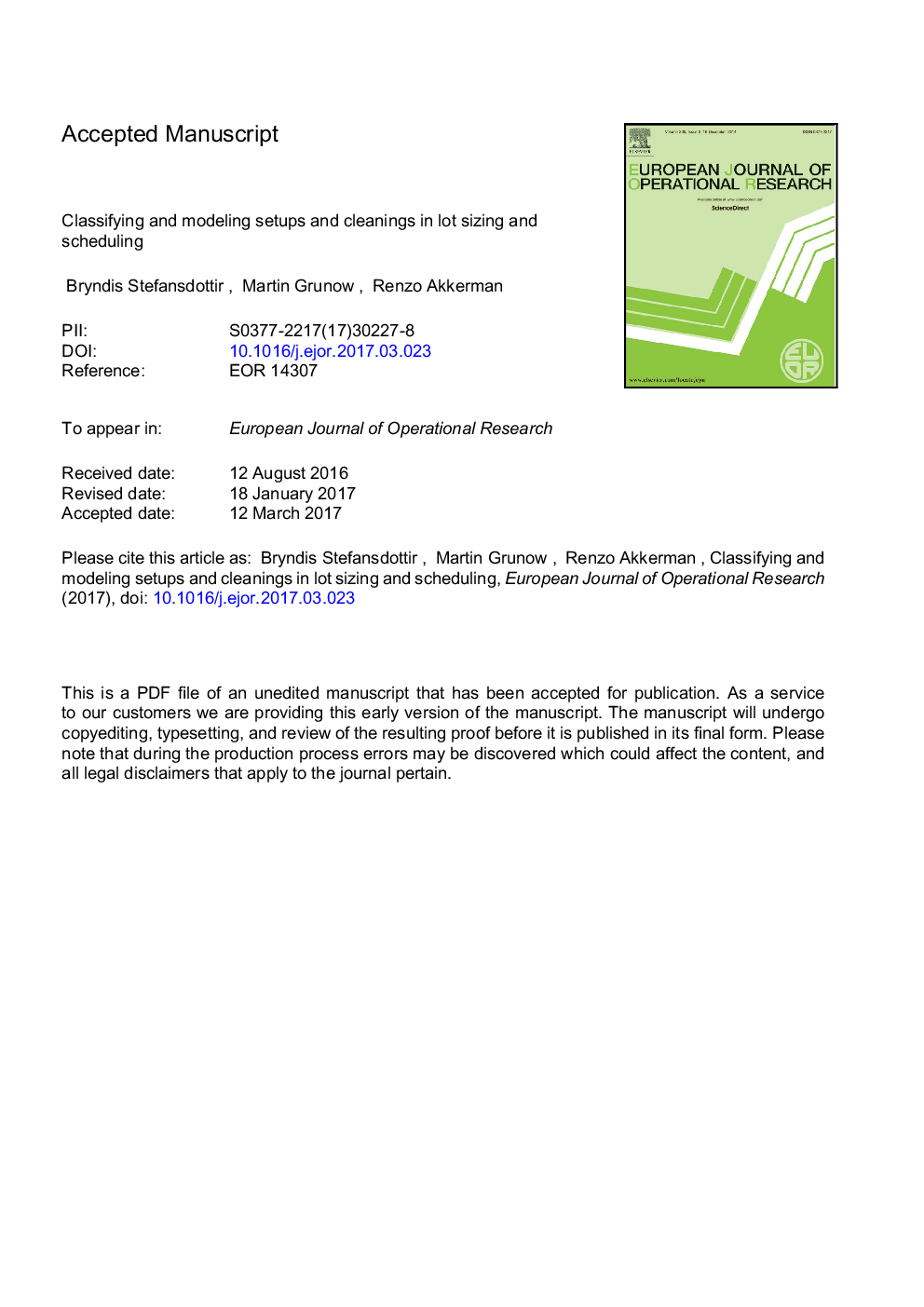| Article ID | Journal | Published Year | Pages | File Type |
|---|---|---|---|---|
| 4959471 | European Journal of Operational Research | 2017 | 33 Pages |
Abstract
Much attention in the lot sizing and scheduling literature has been focused on reducing the number and size of setups. Cleanings, in contrast, remain a key cost driver in large parts of the process industries such as the food and pharmaceutical sectors. Here, quality and safety considerations lead to a diversity of cleaning requirements. A prerequisite for an efficient use of resources is an accurate representation of the constraints imposed by the different setups and cleanings. In this paper, we therefore first develop a general classification scheme for setups and cleanings. Three different classes are identified: batch-, time-, and volume-dependent setups and cleanings. The classes are further differentiated based on their separability, substitutability, reference point, flexibility, product dependency, and batch-size dependency. Secondly, we develop a generic optimization model for lot sizing and scheduling in the typical process-industry setting of flowshops, accurately representing all setup and cleaning classes. Thirdly, we apply the model to the case of cheese production in no-wait flowshops, demonstrating the adaptability of the generic model to industry-specific settings as well as the computational efficiency of the approach. The results show that significant reductions in machine downtime and makespan are achieved. Finally, our numerical tests provide insights into the extent to which a misidentification of cleaning classes may decrease scheduling flexibility and impair solution quality. Our results also show the benefits of considering the heterogeneity in processing times, which can be used to compensate for setup- and cleaning-time differences during successive production stages.
Related Topics
Physical Sciences and Engineering
Computer Science
Computer Science (General)
Authors
Bryndis Stefansdottir, Martin Grunow, Renzo Akkerman,
